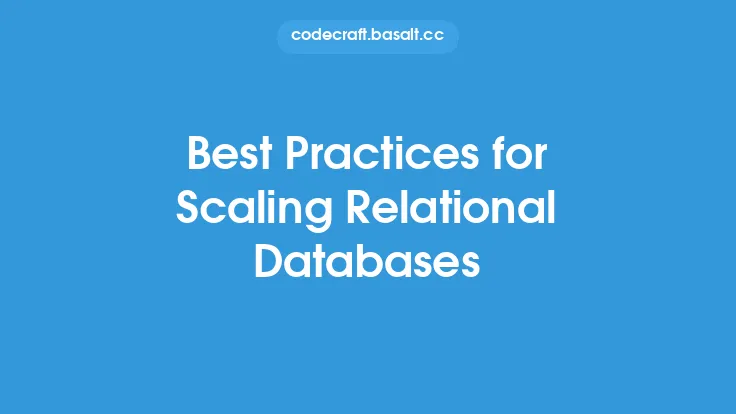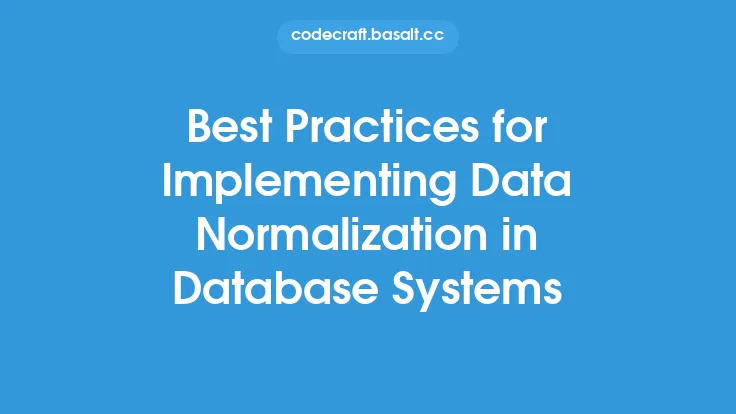When working with databases, retrieving data efficiently and effectively is crucial for the performance and scalability of applications. Data retrieval is a fundamental aspect of database systems, and it involves fetching data from a database to support various business operations, analytics, and decision-making processes. In this article, we will delve into the best practices for retrieving data from databases, focusing on the key principles, techniques, and considerations that can help developers and database administrators optimize their data retrieval processes.
Introduction to Data Retrieval
Data retrieval is the process of fetching data from a database, and it involves querying the database using a query language, such as SQL (Structured Query Language). The query language provides a way to specify the data that needs to be retrieved, and the database management system (DBMS) executes the query to fetch the required data. Data retrieval can be performed using various methods, including querying, indexing, and caching. Understanding the basics of data retrieval is essential for developing efficient and scalable database applications.
Query Optimization Techniques
Query optimization is a critical aspect of data retrieval, as it directly impacts the performance and efficiency of the database application. There are several query optimization techniques that can be used to improve data retrieval, including:
- Indexing: Indexing involves creating a data structure that facilitates faster data retrieval. Indexes can be created on columns or tables, and they can significantly improve query performance.
- Caching: Caching involves storing frequently accessed data in memory, which can reduce the number of database queries and improve performance.
- Query rewriting: Query rewriting involves rewriting queries to optimize their performance. This can include techniques such as query simplification, query reordering, and query merging.
- Statistics and histograms: Statistics and histograms provide information about the distribution of data in the database, which can be used to optimize query performance.
Data Retrieval Patterns
Data retrieval patterns refer to the ways in which data is retrieved from a database. There are several data retrieval patterns that can be used, including:
- Lazy loading: Lazy loading involves retrieving data only when it is needed. This approach can improve performance by reducing the amount of data that needs to be retrieved.
- Eager loading: Eager loading involves retrieving all the required data at once. This approach can improve performance by reducing the number of database queries.
- Batching: Batching involves retrieving data in batches, rather than retrieving all the data at once. This approach can improve performance by reducing the amount of data that needs to be retrieved.
Database Connection Management
Database connection management is critical for efficient data retrieval. There are several best practices that can be followed to manage database connections effectively, including:
- Connection pooling: Connection pooling involves creating a pool of database connections that can be reused. This approach can improve performance by reducing the overhead of creating new connections.
- Connection caching: Connection caching involves caching database connections to reduce the overhead of creating new connections.
- Transaction management: Transaction management involves managing database transactions to ensure data consistency and integrity.
Data Retrieval Security
Data retrieval security is critical for protecting sensitive data from unauthorized access. There are several best practices that can be followed to ensure data retrieval security, including:
- Authentication and authorization: Authentication and authorization involve verifying the identity of users and ensuring that they have the necessary permissions to access data.
- Data encryption: Data encryption involves encrypting data to protect it from unauthorized access.
- Access control: Access control involves controlling access to data based on user roles and permissions.
Data Retrieval Performance Monitoring
Data retrieval performance monitoring is critical for identifying performance bottlenecks and optimizing data retrieval processes. There are several tools and techniques that can be used to monitor data retrieval performance, including:
- Query analysis: Query analysis involves analyzing database queries to identify performance bottlenecks.
- Performance metrics: Performance metrics involve tracking metrics such as query execution time, CPU usage, and memory usage to monitor data retrieval performance.
- Alerting and notification: Alerting and notification involve setting up alerts and notifications to notify administrators of performance issues.
Best Practices for Data Retrieval
There are several best practices that can be followed to optimize data retrieval processes, including:
- Use efficient query languages: Use efficient query languages such as SQL to retrieve data.
- Optimize database schema: Optimize database schema to improve data retrieval performance.
- Use indexing and caching: Use indexing and caching to improve data retrieval performance.
- Monitor data retrieval performance: Monitor data retrieval performance to identify performance bottlenecks.
- Follow security best practices: Follow security best practices to protect sensitive data from unauthorized access.
Conclusion
In conclusion, retrieving data from databases efficiently and effectively is crucial for the performance and scalability of applications. By following best practices such as query optimization, data retrieval patterns, database connection management, data retrieval security, and performance monitoring, developers and database administrators can optimize their data retrieval processes and improve the overall performance of their applications. Additionally, by understanding the key principles and techniques of data retrieval, developers and database administrators can develop efficient and scalable database applications that meet the needs of their users.





